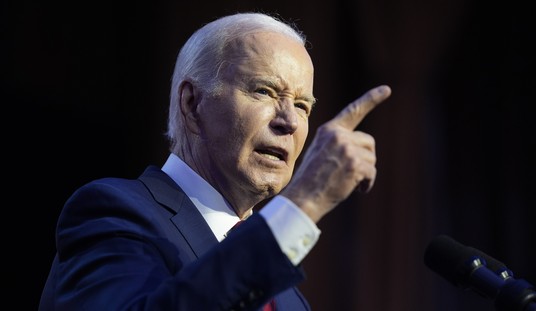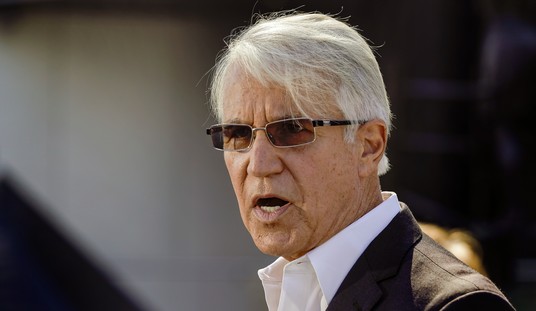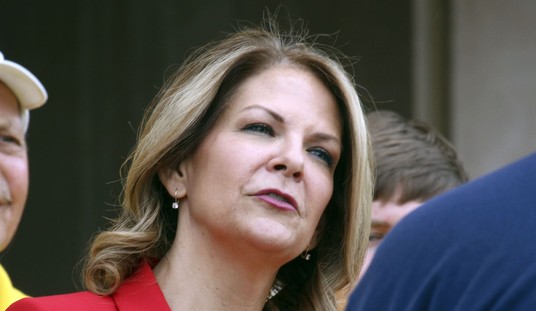From the diaries.
Texas is ground zero in the national higher education reform movement. While the Washington crowd tends to fixate on President Obama’s piddling slap fight with Congressional Republicans over government-secured student loan rates, the real action on fixing higher ed is happening in Austin, Texas. The battle between Rick Perry and the higher ed reformers on one hand versus UT-Austin President Bill Powers and the Ivory Tower status quo on the other hand has been marked by years of grueling and often dull trench warfare that was punctuated last week by a flurry of bombs, beginning with a tuition freeze, followed by rumors of the UT President’s termination, and culminating in a textbook social media public relations campaign that deserves serious examination. And the consequences of this fight? Well, what happens in Texas won’t stay in Texas.
This is the story of “I Stand with Bill Powers,” a remarkably well-executed example of online astro-turfing.
Bill Powers is the President of the University of Texas at Austin. He individually receives an annual income roughly twelve times the median household income of Texas, not counting six figures of deferred compensation or benefits. He commands a robust team of sharp folks internally at UT and has secured the big guns as outside public relations counsel. There is now an ongoing effort– a well-orchestrated social media campaign which appears highly inorganic– to “save” him. Save from what and for what is the difficult part to figure out.
This post aims to 1. provide some context for the UT kerfuffle itself, 2. cast some light on how people and organizations successfully astro-turf social media campaigns, 3. provide reasons why members of the media ought to be a bit more careful in how they report on the online/digital/new media horse race, and 4. offer some thoughts on what comes next.
1. Kerfuffle Context
First, some background on what the heck this “Save Bill Powers” stuff is all about.
There’s the very, very macro context, which is basically that the higher education establishment has become sclerotic and out of touch, tuition has skyrocketed well beyond inflation, and the next major economic shock in America could easily be the higher ed bubble bursting. It’s an iceberg straight ahead and we’re the Titanic, but there’s still time to steer the ship into safer waters. If we don’t, though, yikes.
This is the startling context for this kerfuffle:

In the summer of 2011, battle lines were drawn, with the “Texas Coalition for Excellence in Higher Education” (a.k.a. “The Coalition”) emerging out of the Burson-Marsteller P.R. shop to support Bill Powers and the higher ed status quo. In October of 2011, Natalie Butler and Keshav Rajagopolan (current and former Student Body Presidents, respectively) launched a “spin-off” group group called Young Texans for Excellence in Higher Education. Various groups formed on the other side (including “Rock the Ivory Tower“) devoted to affordability and reform.
The Governor also called for a 4-year tuition freeze for incoming college students (in January of 2009) and a $10,000 college degree in 2011. The $10K degree idea was met with scorn and incredulity from the higher ed establishment, but it’s now been adopted in public universities across the state. And the tuition freeze? Well, just this month, the UT Regents approved it for two years (not the four that Perry initially called for). Bill Powers lashed out at the tuition freeze idea online and in an email:


This is where it gets interesting. While most of the press coverage has focused on the numbers of people who “joined” a Facebook group called “I STAND WITH BILL POWERS,” at least one member of the press has hinted that something else might be afoot here. The Texas Tribune‘s Reeve Hamilton tweeted a note of caution:

Let’s take the url registration, just 100 minutes or so after the nuclear BurkaBlog post went live, the savebillpowers.com domain name had been secured:

Okay, that’s been known to happen organically, I guess. People just happen to read an unsubstantiated, rumor-mongering blog post at 7:30 pm on a Wednesday night and just happen to buy a domain name that just happens to become the focal point of a public relations campaign, within an hour and a half. And they just happen to buy the domain name anonymously. It just happens all the time.
Meanwhile, the issue positioning, keywords, and instructions went out via Facebook, from Natalie Butler of the “Young Texans”:




A bit later, two-time Teaching Assistant to Bill Powers Rachel Meyerson founded the “I STAND WITH BILL POWERS” Facebook group:


In order to boost its “groups,” Facebook allows individuals to not only invite someone to a group but actually add him or her to it, whether he or she is even interested. Many Facebookers, even young digital natives, aren’t engaged enough to even notice they’ve been added without their permission. And many Facebookers aren’t savvy enough to know how to leave a group after they’ve been “Facejacked.” Some people tend to fear leaving the group and insulting their friends who added them. Needless to say, spam-adding folks en masse to Facebook groups they may or may not agree with is not cool, and it’s definitely not true digital virality in any organic sense. Indeed, this guy showed how easy it is to add all of your Facebook friends to a group in only about 20 seconds.
Pranksters angry about the loss of personal control even began adding Facebook founder Mark Zuckerberg to NAMBLA (North American Man Boy Love Association) groups in protest. It’s a problem, and it’s bad etiquette at the very least.
Bad etiquette or not, “Facejacking” is how the “I STAND WITH BILL POWERS” group grew and continues to grow. If you go in to the group, click “about,” then click to view members by date added, you can find the screenshots below yourself. Scroll down to the beginning (it’s kind of an annoying process), and you’ll see that nearly everyone was spam-added by just a couple of individuals (these first 120 or so members are in reverse chronological order):



See all of those “added” folks? The overwhelming majority: added, not invited. And all by two individuals.
But surely they just seeded it a bit, and it became an organic, sustaining organism of its own shortly thereafter, right? Not really. Yes, others got in on the spam-adding action, but look at a sample from Friday:

Or the 21 most recent additions:

Again, out of 21 new members, Callie Williams added 1, Shelah Flowers invited 1, Andrew Grant invited 2, Keshav Rajagopolan added 3, and Rachel Meyerson added 14. Rajagopolan and Meyerson alone spam-added 81% of the newest 21 members. In total, 86% of the newest 21 members were spam-added, while 14% were invited.
We’ve established that the response to this kerfuffle was astro-turfed. So what? People astroturf all the time.
Well, it’s one thing to astro-turf, but it’s another thing to actively lie to the press about it.
3. Why More Skepticism is Needed in Reporting on Social Media
Let’s look at Keshav Rajagopolan’s statements to the Houston Chronicle.
Did social media explode with support for Bill Powers? According to the Houston Chronicle, yes:

Keshav Rajagopalan, who was UT’s student body president in 2008-2009, said he started the Facebook group last night after Burka’s post was published. He said thousands have asked to be part of the group. He worked with Powers closely during his time as student body president, but thinks that many UT students who did not know him personally recognize him as a leader that cares about them.
Wait. We just saw that Rachel Meyerson started the group, and that nearly all the early members were spam-added by other people. Indeed, Rajagopolan was personally responsible for a great deal of the spam adding. “Thousands have asked to be part of the group” is just plain deceitful.
While the spam-adding continued at a fast and furious pace on the “I STAND WITH BILL POWERS” group, there was no activity overnight and into mid-morning on the “Save Bill Powers” page:

Again, a page (rather than a group) doesn’t allow you to spam-add. People can be invited, but they can’t be added without their permission.
So, the Save Bill Powers page was essentially a ghost town, and essentially the entirety of the social media operation to that point was astro-turfed by a P.R. firm. Jennifer Sarver of said P.R. firm tweeted:




Meanwhile, the media drumbeat about how amazing this spontaneous social media movement has kept pounding.
Many uncritical headlines and stories were all over the web this past week. To give credit where credit is due, though, an Austin American-Statesman story did join the Tribune‘s Reeve Hamilton in noting that something wasn’t quite right with the numbers:
By 5 p.m. Thursday, a Facebook group called “I Stand With Bill Powers” had more than 9,800 members, although some whose names were listed said in subsequent posts that they had been included by friends without their knowledge and against their wishes.
Bottom line: the widely reported “I stand with Bill Powers” Facebook effort was not an organic display of support. It was, however, publicly held out by the organizers as organic.
It’s one thing to astro-turf, as that happens sometimes in the public relations field– it now ought to be clear how easy it is to do that. But it’s another thing to astro-turf and lie and say it was organic, then not only passively allow the media to inaccurately portray it as organic but actively feed that inaccuracy with untrue statements.
As for members of the media, more of them should turn a far more critical eye to claims of social media prowess based on what could very well be pure astro-turf.
4. What’s Next?
Moving forward, the higher ed reform movement will continue, and the status quo guardians will continue as well. The UT faculty this week voted to support their boss, although one professor abstained:
English professor Snehal Shingavi was the only member who abstained from voting at the meeting. Shingavi said it was dangerous for the faculty’s support of Powers to be coupled with tuition increases.“There is an unfortunate narrative in Texas that presents faculty as living off the fat of tuition,” Shingavi said. “It’s important not to connect these two. I abstained from voting because I understood the importance of having a unified vote.”
Meanwhile, the target of most of the negative social media content on the “Save Bill Powers” page(s) and “I STAND WITH BILL POWERS” group, Governor Perry, is not going away quietly on this issue:
“I don’t think it’s any big secret that I’m for keeping the cost of education down, so my suspicion is that no one in Texas thinks that I’m for tuition growth,” Perry said. “It’s a good message to send to the citizens of the state that we’re not going to just have tuition increasing with no regard for what’s happening economically for the citizens of the state.”
And, ultimately, that’s why this “movement” smelled so fishy from the get-go. You’re telling me that students are rallying around the guy who wants to raise their tuition? Yeah, no. It was always a fabricated social media cause via public relations firm. It was well done, no doubt– a great example of why my alma mater pays them so much to do what they do. But it was never a truly viral or organic cause.
As for Bill Powers, can someone please explain to me what exactly are his accomplishments, or, alternatively, what exactly are his goals, ideas, values, or policies that are worthy of support?
UT Professor Rob Koons bravely asks this very question:
Under President Powers, tuition has climbed over 23% in just 4 years (15% over inflation, as measured by the consumer price index). Average net cost per student (taking into account financial aid) has gone up 33% from 2005 to 2009, from $4534 to $6052 (the System stopped reporting this figure in 2010). In the same period, spending on administrative salary has gone up 86% at the university level, 55% in the College of Liberal Art and 45% in the College of Business, to take two typical examples of the Colleges. Spending on faculty salaries have gone up 21% in the same period (13% over inflation), with no increase in student learning, as measured by the Collegiate Learning Assessment (in which UT ranks in the 23rd percentile of its peer group).President Powers’ hand-picked student ‘advisory’ panels (whose discussions and votes have not been released to the public, despite the Open Meeting act) have simply rubber-stamped the views of Powers and his allies. For example, two years ago, after key lawmakers (including Senator Ellis) announced that any increase in tuition above 4% would lead to a reconsideration of tuition deregulation, Powers’ panel miraculously determined that UT “needed” an increase of exactly 3.95%. Amazing coincidence!
Change in rankings:
US News #44 in 2008, #45 in 2012. A drop of one position, paid for by at least a 33% increase in costs to students!Four-year graduation rate
2005: 46.4%
2008: 47.7Six-year graduation rate
2005: 74.8
2008: 77.5Nursing exam pass rate (UT graduates):
04-05: 97.0
2008: 92 (A drop of 5%)Engineering exam pass rate:
04-05: 90.2
2008: 89Exactly what are his accomplishments?
More on that dismal learning percentile figure:
On March 14, Washington Post reporter Daniel de Vise, in his piece “Trying to assess learning gives colleges their own test anxiety,” reported that the University of Texas at Austin ranks very low in achievement of student learning. “For learning gains from freshman to senior year,” writes de Vise, “UT ranked in the 23rd percentile among like institutions. In other words, 77 percent of universities with similar students performed better.” The Post obtained this data through a public records request. The standardized test was conducted by the Collegiate Learning Assessment.Prof. Richard Arum, a New York University sociologist, “reviewed UT’s results at the request of the Post.” He found that “seniors have spent four years there, and the scores [on student learning] have not gone up that much.”
Ouch.
Again, what are Bill Powers’ accomplishments? Somehow vastly higher tuition with academic ranking and performance stagnation doesn’t seem like an accomplishment.
That all being said, the faster we can bring this back to a discussion about ideas rather than a quarrel between players, the better. For students. For parents. For alumni. For employers. For taxpayers. For everyone. Right now, the easy fixation is on Rick Perry vs. Bill Powers, but the ideas they are talking about are important. Tuition. Affordability. Accountability. Opportunity. The American Dream. Texas as America’s shining state on a hill.
Do we accept the broken status quo, or do we reform our higher education system in Texas? At stake: far more than parochial Ivory Tower politics.
Will Franklin is a proud graduate of UT-Austin. He also formerly worked for Governor Rick Perry. This post was adapted from an original WILLisms.com post.















Join the conversation as a VIP Member